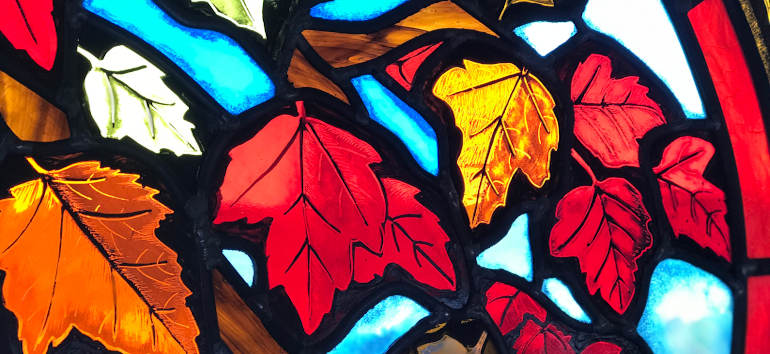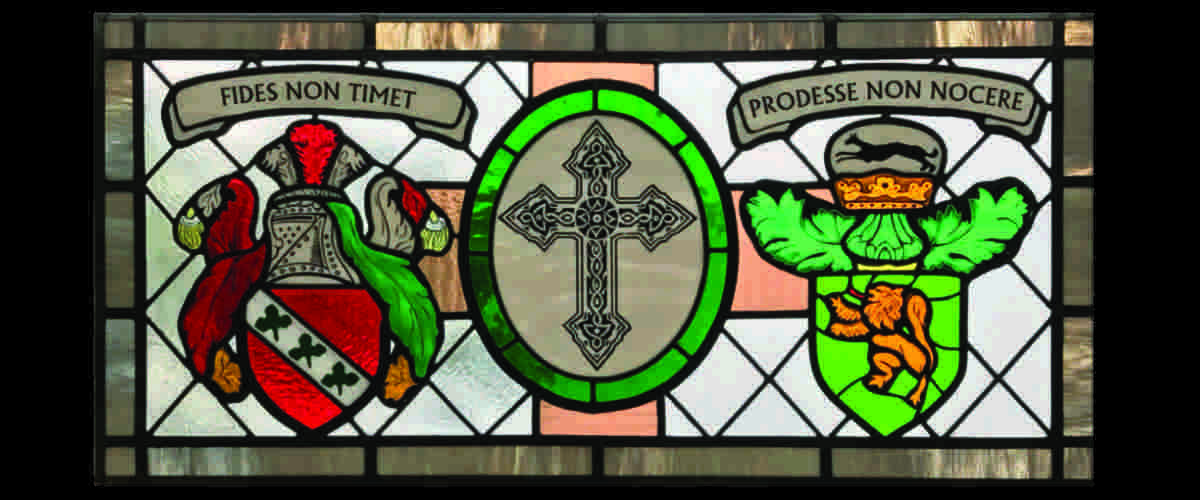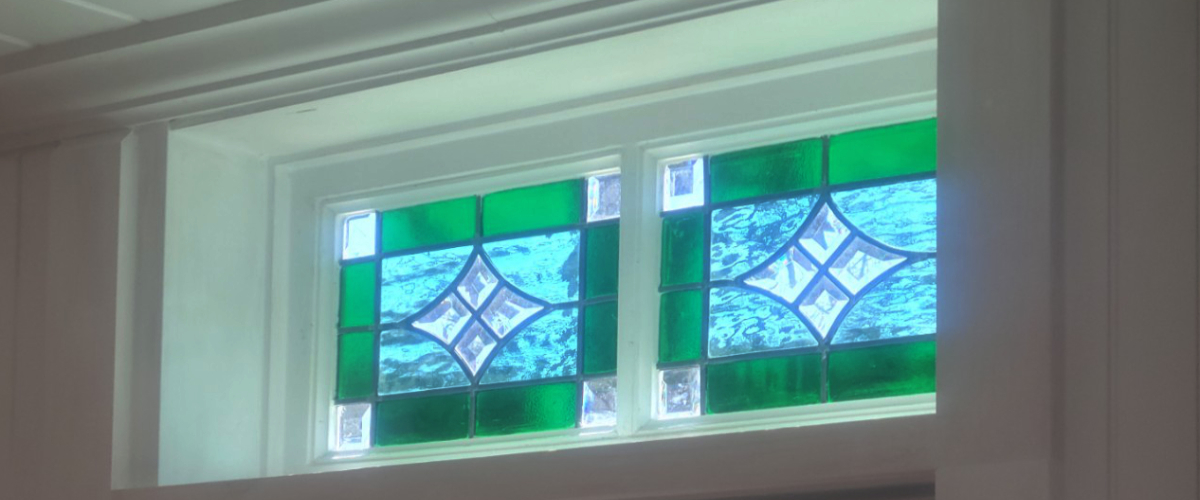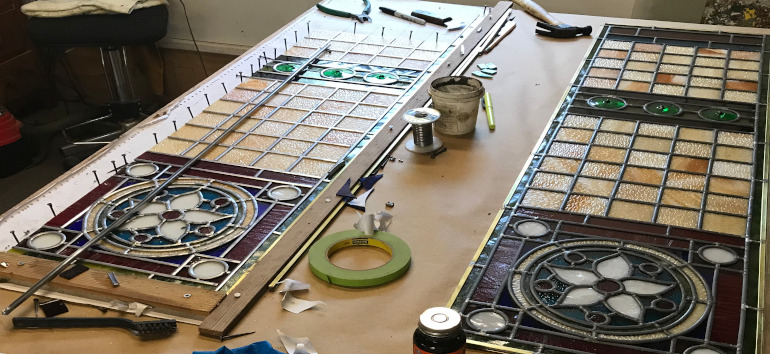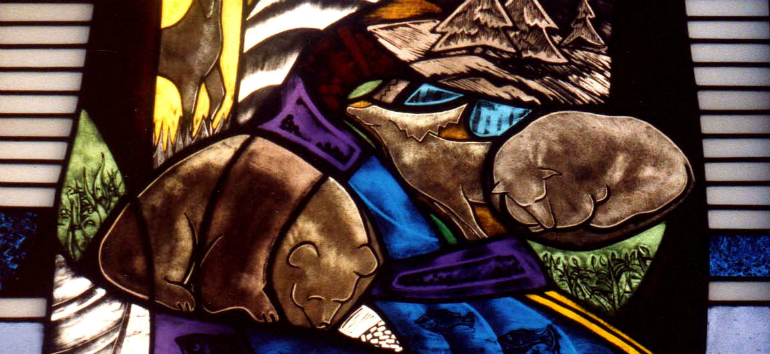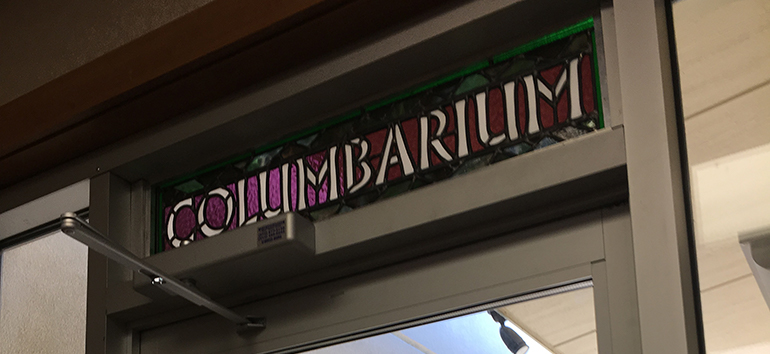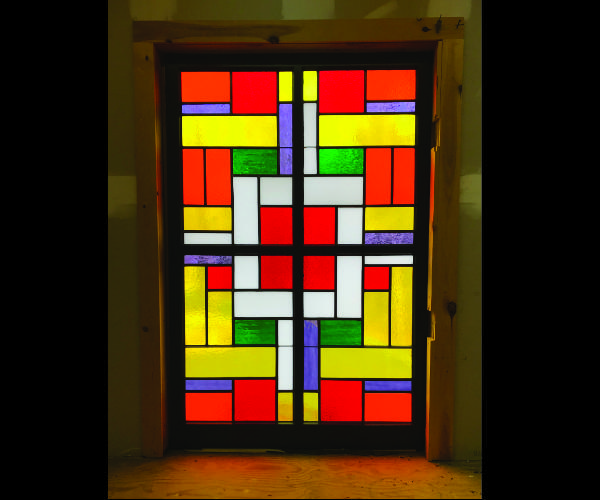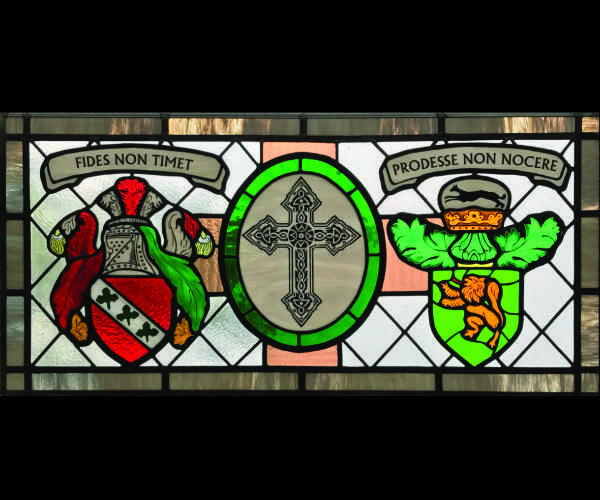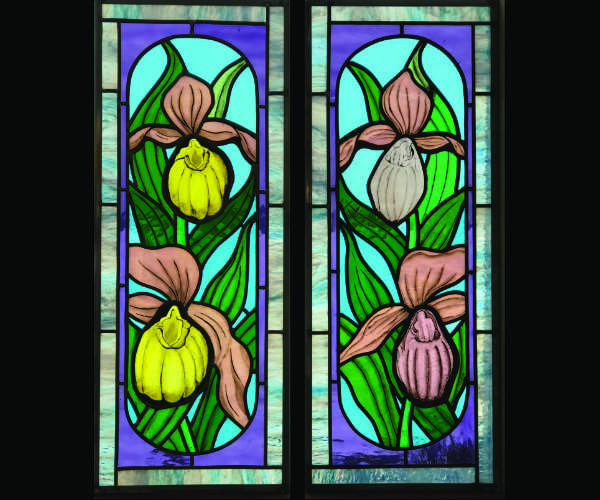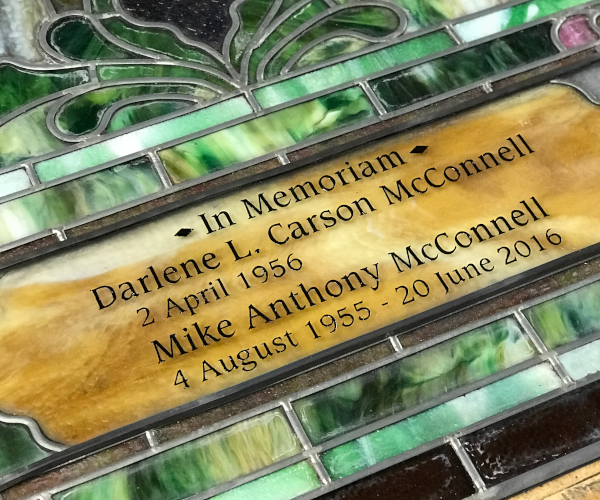Stained glass: New & Restorations
Custom designs, restoration and repair of stained and leaded glass windows. I have been creating and repairing leaded glass windows for over 35 years and would be happy to discuss your project and ideas with you.
NOTE:
We do not sell glass or any supplies, including lead, copper foil, etc.
The misnomer "Stained Glass"
"stained glass" is such a commonly used term that most people don't realize that most of what they are referring to isn't "stained" at all. Stained glass is actually more of a process than an actual type of glass, but has become the popular name for colored glass windows.
The colored glass in most windows is made by adding a metallic oxide to the raw materials. (details at how colored glass is made) Stained glass is made by painting an oxide of silver on clear or light-colored glass. The stain is mixed much the same as glass paint, then applied and fired in a kiln to create a permanent bond. Working with stain is an art in itself, as it takes practice and knowledge to get reliable results. Stain is often used as an accent to painted glass and can be worked with various tools; sticks and scrapers, much the same as glass paint.
I used stain in the center (yellow) portion of the top panel of this window
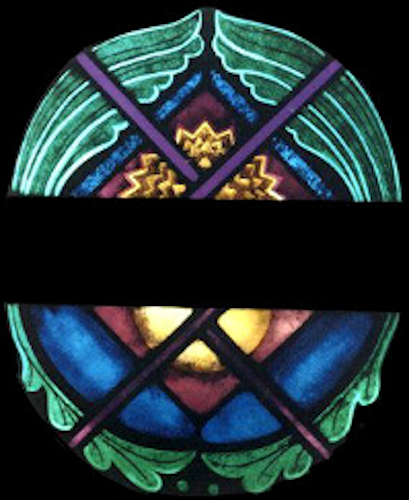
In this case, the stain was applied to the back of the glass, which is a common way of doing it. Stain is fired at a lower temperature than glass paint, so can be added without fear of messing up the paint.
Methods of Holding Glass Together to make a Window
Lead Came
"U" and "H" shaped lead came is the oldest traditional way of holding glass together. Modern day lead strips come in a variety of widths and provide a strong and long-lasting structure for stained glass windows. Leads are wrapped around the edges of the glass to create the design. After the window has been "leaded" together, the intersections of the lead pieces are soldered to create a strong joint. The window panel is then "cemented" by rubbing putty over the window and filling any spaces between the glass and the lead, further stiffening the panel.
Copper Foil
A second way of holding the glass together is by using copper foil. I think it is safe to say that nearly any stained glass lampshade that you find these days is made by using this method.( if it's made of real glass) Many window panels are also constructed using copper foil. The foil has an adhesive on one side and is wrapped around the edges of each piece of glass. The pieces are then assembled on a pattern and soldered together.
Concrete and Epoxy
A third, and radically different method of holding glass together is really in a special class by itself called, "dalle de verre", French for "glass slab". The glass is very thick (up to 1 inch) and is shaped by either chipping with tools or cutting with a glass saw. The pieces are then bound together in a mosaic fashion using cement or epoxy.


